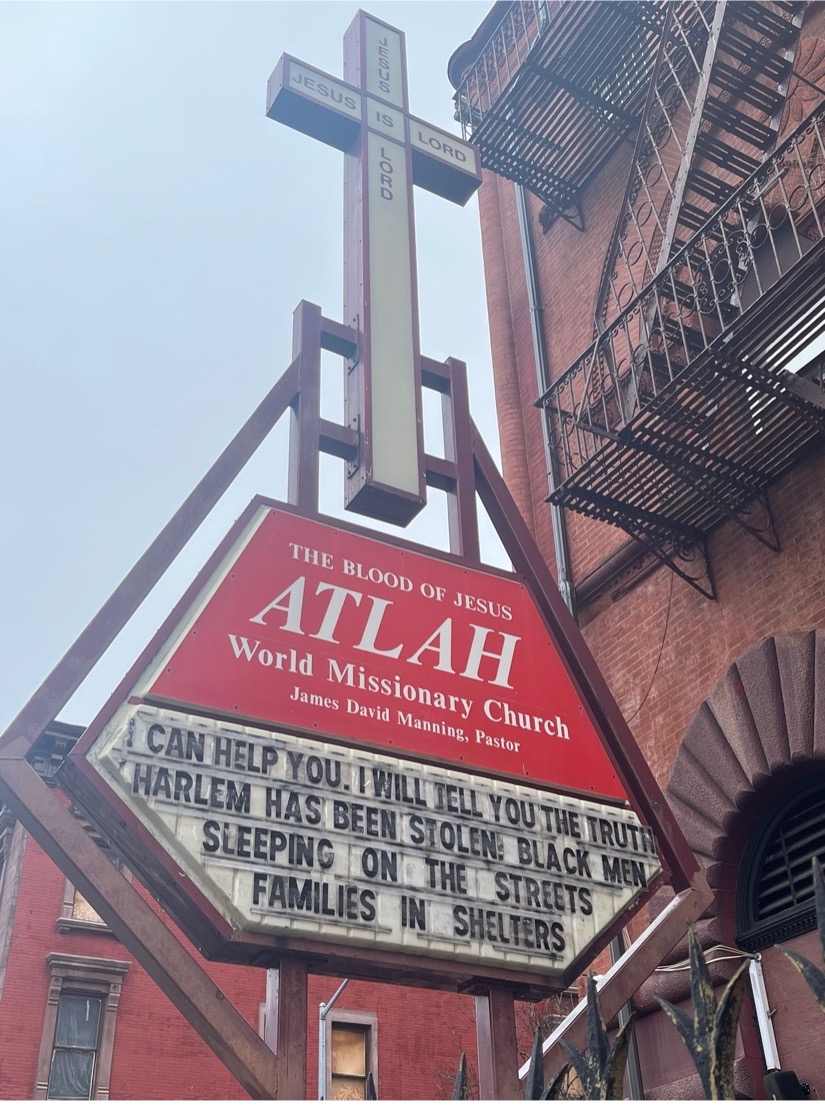Written by: Rashawn Merchant
Harlem, New York. A centralized location for Black people in America has become a marker for gentrification’s complications. For over a century, Harlem has distinctly been home to generations of Black residents through both good and bad. As an entertainment hub, many relate Harlem to its renaissance movement, which sparked an upsurge in musical, literary, and cultural influences. In parallel, Harlem has been plagued by low income and high crime during the same period. The neighborhood has struggled to be free from this vicious cycle and gentrification has begun to take hold.

Rashawn Merchant/Earth Shiners
Being in Harlem for more than 20 years, I’ve seen the effects of gentrification. Much of the newer generations and younger adults who should be well able to afford an apartment do not have the means. Many still live with their parents because they do not want to leave the neighborhood. Those fortunate enough to move on their own have difficulty reaching financial goals due to the amount spent on rent. 40% of people in the U.S. struggle to afford rent payments, as 30% of their income goes towards housing costs. That number continues to rise, and it seemscolonial that people with long-standing attachments to Harlem move due to external factors.
As Black culture stamped itself as one of the world’s most influential forces, many from other cultural backgrounds have been able to participate in it. It’s easy to identify this when seeing the millions of TikTok videos with people dancing to songs by Black artists. I fully agree that it should happen as well. As we all live on this beautiful planet, cultures are for everyone’s enjoyment and experience. It’s how we, as humans, can learn from each other and avoid ignorance. The problem occurs when taking part in someone else’s culture becomes exploitative. Due to the pandemic, real estate soared to extreme heights, to which every American has succumbed. Prices hit New York City hard, and as of January 2023, Apartmentlist.com states the median rental price in the city stands at $2,039, which is a 3.9% year-to-year increase. With rising inflation, apartment prices increased, and many living in Manhattan’s middle and lower ends became forced to move elsewhere. Harlem became a prime location.

Rashawn Merchant/Earth Shiners
Much of the trendy appeals of Black culture, now spread throughout the internet, made Harlem a target zone for people to migrate. Historically, while Harlem has always had lower rental prices than the rest of Manhattan, many were still turned off from uptown because of taboos between Black and White residents in the city. We can see this clearly when looking at the divide when crossing to and from Central Park. However, prices have become so extreme that many residents looked to Harlem as a rest haven. The influx of new residents has put current Harlem residents in grave condition. Many Harlemites were already struggling to afford rent prices; however, it was worth it because of the opportunity to be around family and friends. Wouldn’t we all want to be near those closest to us? Unfortunately, real estate developers see interested residents come from wealthier neighborhoods, and they know they can charge a premium because an increased price in Harlem is still more affordable than the areas these migrants came from. This is how long-standing residents end up having to relocate.

Rashawn Merchant/Earth Shiners
Poverty and low education rates prevent people from gaining better job opportunities for increased income. Harlem has gone through several decades of epidemic societal issues, and many of the residents never had a chance at home ownership or to provide stability for their children to maintain the living conditions needed to sustain themselves in the area. Lastly, there needed to be more government assistance from which many wealthier neighborhoods benefitted, and Harlem never received. Even with the current, more progressive initiatives and policies, it came too late for people to have a chance at staying. Additional rental assistance programs for sustainable apartments would’ve significantly improved conditions.
In this modern age, people have begun integrating faster than ever. Every cultural group should have the opportunity to stay within themselves, and Harlem residents deserve the same.
Thanks for Reading!
Earthshiners@earthshinersmagazine.com
Copyright 2023 Earth Shiners Creative LLC

Leave a Reply